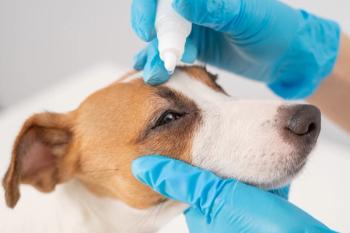
AAEP publishes Equine Piroplasmosis guidelines
These guidelines were designed with the goal to assist veterinarians in detecting, controlling and preventing Equine Piroplasmosis.
The American Association of Equine Practitioners (AAEP) recently released comprehensive guidelines on its website to help veterinarians with the identification, control and prevention of Equine Piroplasmosis (EP)—a blood-borne protozoal infection of equids with a mortality rate for infected horses of up to 50%.
According to an organizational release, although natural tick-borne transmission of EP in the US is rare, recent cases particularly involving iatrogenic transmission in Quarter Horse racehorses have emerged. The author of the AAEP Infectious Disease Guidelines: Equine Piroplasmosis, Angela Pelzel-McCluskey, DVM, MS, national epidemiologist for equine diseases at USDA APHIS Veterinary Services, noted many of these racehorses had direct connections to unsanctioned racing and unhygienic practices by owners and trainers.
“Re-use of needles, syringes, and IV sets, blood-contamination of multi-dose drug vials, use of illegal blood products from other countries, and direct blood doping between horses have been identified as common methods of blood-borne disease transmission in this population,” said Pelzel-McCluskey.
“Equine practitioners should be aware of the risk for EP and other blood-borne diseases, such as EIA, in this high-risk population and provide educational outreach to clients on appropriate biosecurity to prevent disease transmission between horses,” she added.
What's more, it is suggested that current Quarter Horse racehorses be regularly tested for EP and EIA throughout their racing career. In addition, equine practitioners confronting former Quarter Horse racehorses as part of a pre-purchase or routine exam are encouraged to share with owners the risk of previous disease exposure and recommend testing.
EP is regarded a foreign animal infection in the US and any identification must be reported to the state veterinarian and/or to USDA APHIS Veterinary Services. Horses infected with EP can join a USDA APHIS-approved EP treatment program which is typically successful at permanently eradicating the disease.
For good measure, the EP Guidelines were also reviewed and approved by the AAEP’s Infectious Disease Committee and board of directors. View the guidelines here:
Reference
Equine Piroplasmosis Guidelines published by the AAEP. News release. The American Association of Equine Practitioners. January 3, 2022. Accessed January 5, 2022. https://aaep.org/news/equine-piroplasmosis-guidelines-published-aaep
Newsletter
From exam room tips to practice management insights, get trusted veterinary news delivered straight to your inbox—subscribe to dvm360.




